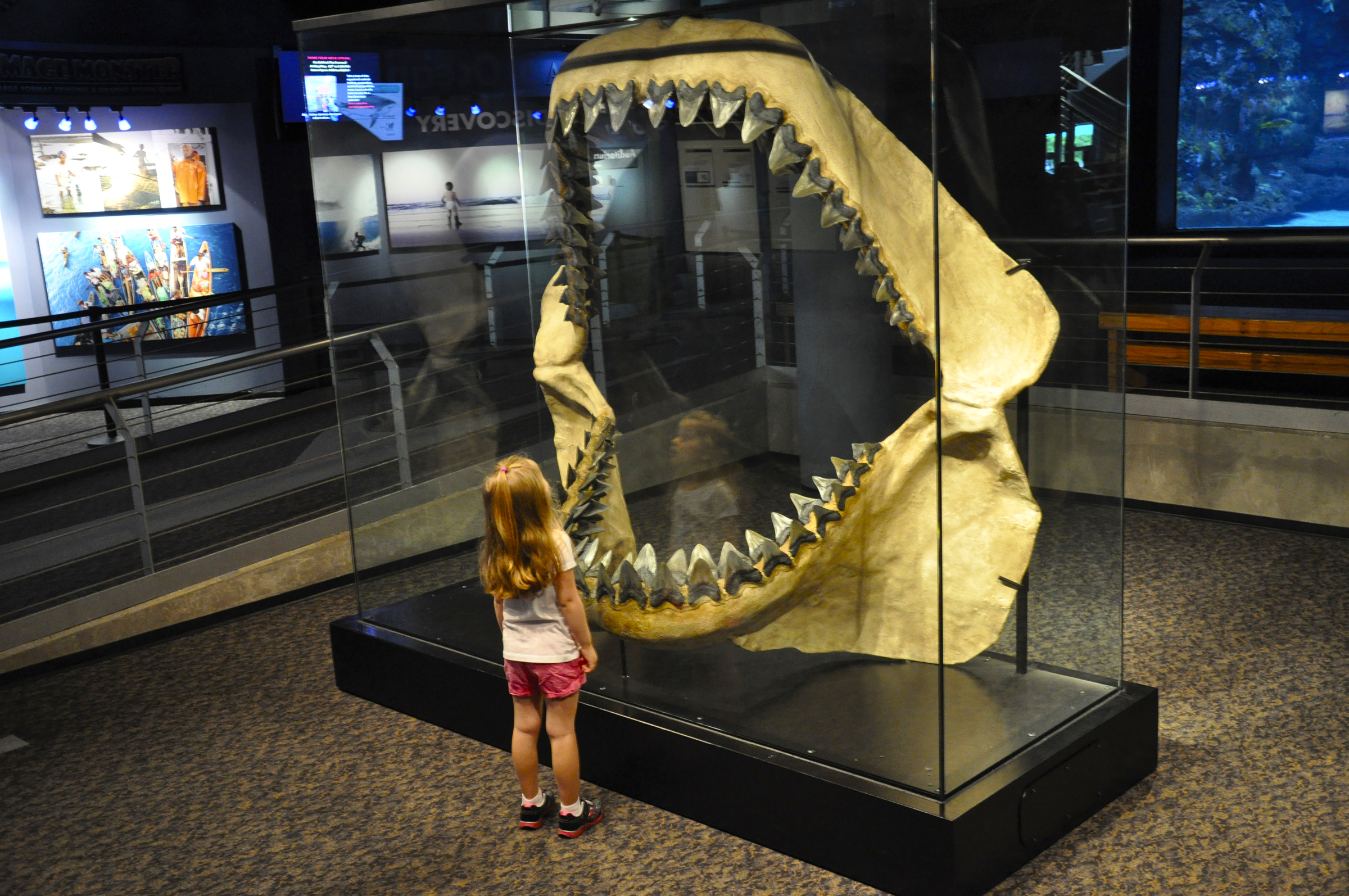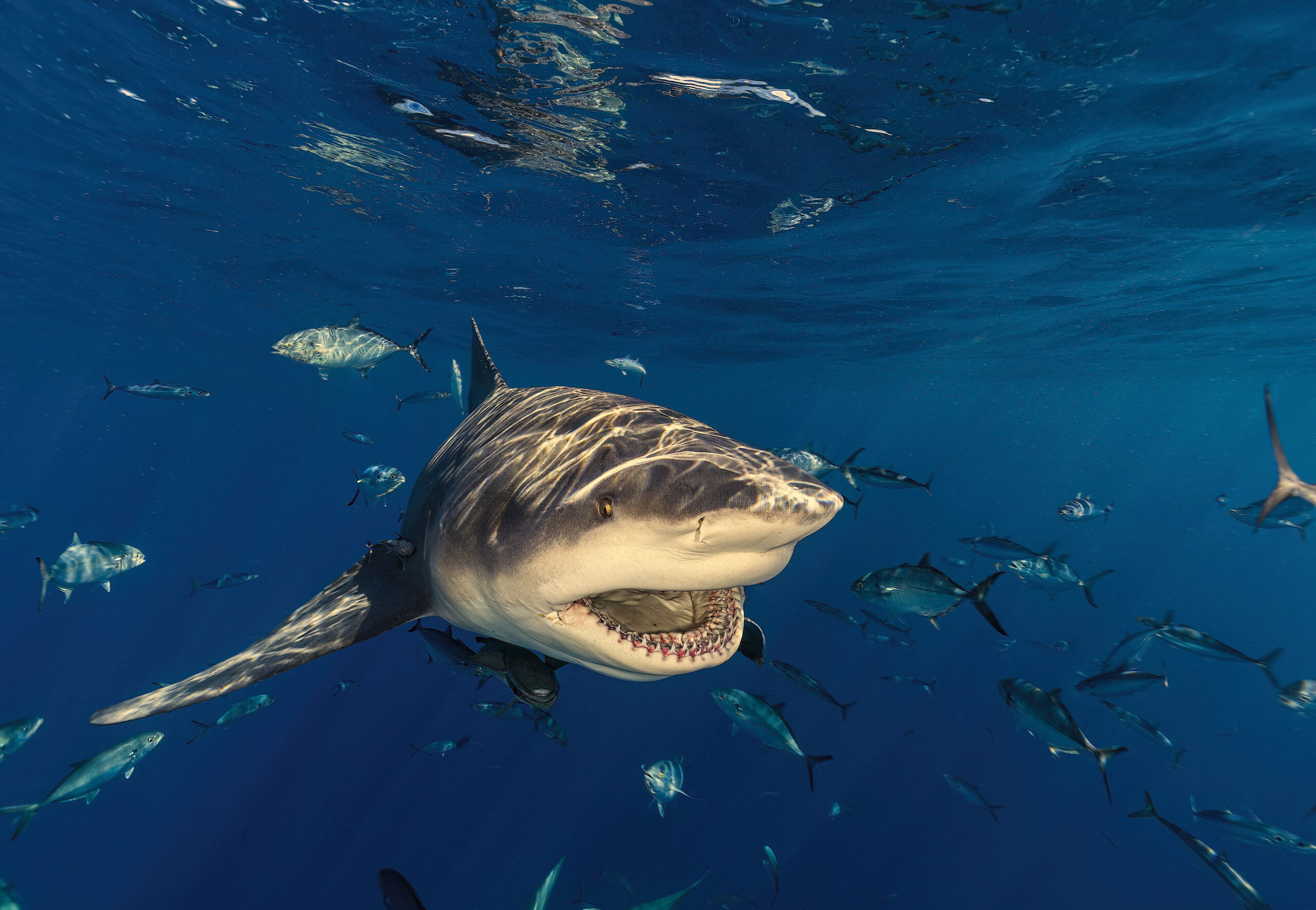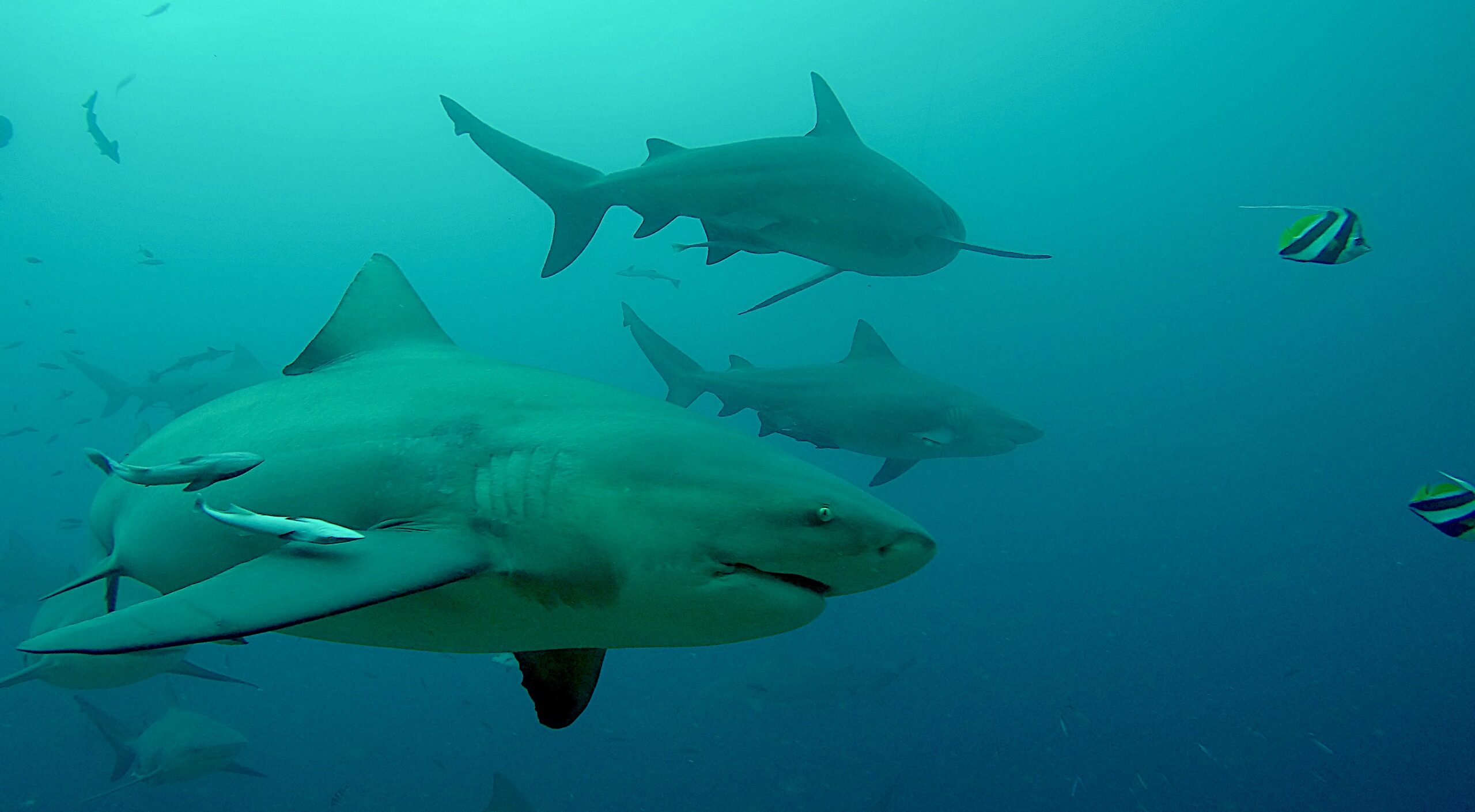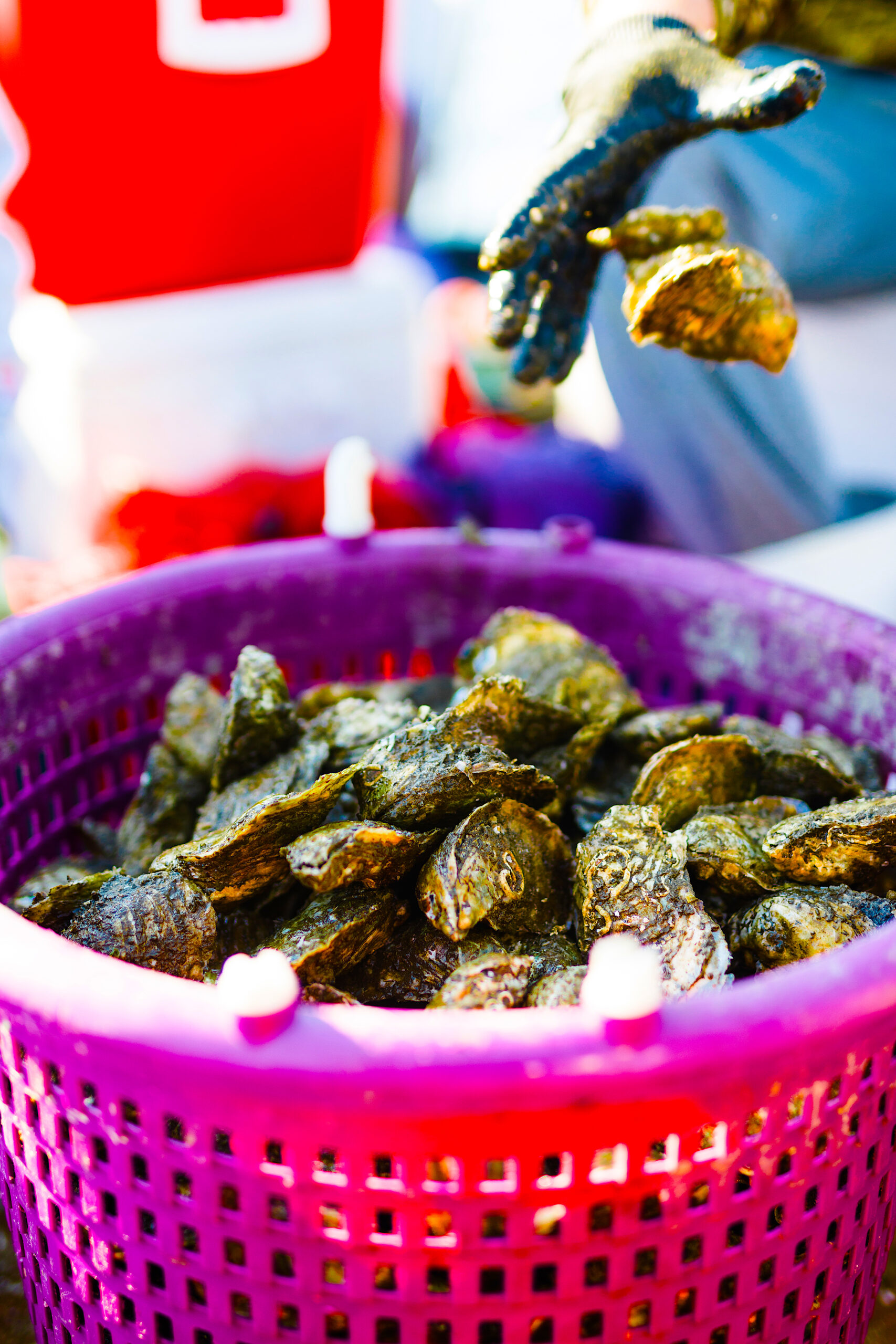Caroline was excited for this day. Her parents had scheduled a special trip to the North Carolina Aquarium at Fort Fisher for her ninth birthday. She couldn’t wait to get inside.
“Come on, Mom!” she called out.

Caroline was anxious to see animals and to learn how she could one day work at the aquarium. She yanked open the front doors with the help of her father, Bill.
Beaming with happiness, she noticed a statue of an alligator. “Oh wow!” she cried.
“Take a look at the teeth on that thing,” Bill said.
Mandy, Caroline’s mother, looked on with awe. “They were almost extinct back in the 1970s. They’ve made quite the comeback thanks to many conservation efforts,” she said after reading the display.
“I remember reading that alligators make what are called gator holes in the bottoms of ponds and marshes. This is very helpful for other animals during times of drought because the holes hold water,” Bill added.
Caroline noticed an unusual alligator in its enclosure. “I’ve never seen a white gator before! Her name is Luna,” Caroline exclaimed.
“It says here, ‘Only 30 to 50 true albino alligators exist.’ That means she is very rare,” Mandy noted, pointing to the sign.
“It’s 11:15,” Bill said, after checking his watch. “We had better check in for the behind-the-scenes tour.”
BEHIND THE SCENES
Other visitors already had gathered in a line. An education staff member, Dave, made sure all participants were wearing closed-toed shoes for safety.
“Alright everyone, let’s get started,” Dave said while leading the group down a hall.
He showed the visitors animals not currently in the main exhibits. Caroline particularly liked two stingrays.
They looked delicate as they glided in the water.
“They’re all cartilage and no bone,” Dave mentioned.
“I read stingrays are actually cousins of sharks,” Caroline added.
“That’s exactly right,” Dave replied. “Stingrays are not aggressive, but their tails have a venomous barb that is meant to protect them from predators. The animals have glands underneath their spines that inject venom into wounds. It is important that you avoid the barb.”
Caroline’s attention then turned to a tank full of tiny seahorses. “Why are the seahorses back here?” she asked.
Dave explained that even though the seahorses are small, they reproduce at a high rate, so there is not enough room for all to be kept in the exhibit area.
“Seahorses also can change their colors to blend with their surroundings for protection,” Caroline said, recalling a lesson from school.
Dave smiled and added, “Those colors allow them to surprise their prey.”
LARGE TANK, BIG SWIMMERS

The group arrived at the top of the 235,000-gallon tank that represents the Cape Fear Shoals. Pointing to the diving suits and equipment that lined the walls, Dave said, “See the suits over here? Some staff and volunteers wear this equipment when we need to go down and clean the tank, or help the animals. Each of our divers has extensive training. Volunteers must be certified to dive, then they are trained to dive in this tank.”
Caroline began imagining being paid to dive. She had read about such possibilities on a marine careers website. She thought of being a marine biologist or an aquarist, but starting out first as an aquarium volunteer.
“We also go into the tank for shows such as ‘Dialog with a Diver’ on Mondays and Fridays,” Dave continued.
“Dialog? We can speak to you under the water?” a boy inquired.
Dave nodded, “With the help of an aquarium educator, the diver answers questions you have about the animals or the tank.”
Caroline noticed the aquarium’s green sea turtle swimming to the top of the tank for a breath of air. She watched with excitement and awe as the reptile broke through the water with the grace of a dancer.
MAKING CONTACT
After the tour, Caroline and her family visited more exhibits, heading straight for a tank of snakes. “Ah! It’s a diamondback rattlesnake!” Caroline screamed.
“They won’t get you,” Mandy replied, as she grabbed her daughter’s hand.
“They are the deadliest of the 32 species of rattlesnakes in the world,” Bill added, with a chuckle.
Mandy cringed. Caroline leaned in closer for a better look. “It has an intricate pattern. It’s beautiful,” the girl said.
“That pattern is where the name comes from,” Bill continued. “The diamond shapes and brown and black colors help the snake hide from its prey.”
Caroline’s mother then beckoned her over to the next room’s entrance. Caroline, Bill and Mandy stepped through the set of double doors labeled Marine Building.
Caroline quickly noticed a strange creature crawling around the bottom of the pool. She made her way over and stood tentatively at the edge.
“It’s okay, you can pet it,” said Ashley, a part-time volunteer. She extended the animal to Caroline.
Guests can see horseshoe crabs and other species in the petting pool.
“What is it?” Caroline asked.
“It’s a horseshoe crab,” Ashley responded. “It is very calm, and it won’t hurt you.”
Caroline reached out her hand to touch the animal’s smooth, hard shell, then, its legs.
“Such an interesting-looking crab!” she exclaimed.
“Well, the horseshoe crab is not actually a crab, as the name suggests. These animals actually are related to arachnids, otherwise known as spiders and scorpions,” Ashley explained.

“Why does it look so ancient?” Mandy asked.
“That is a good question. The species has been around for 250 million years. They look the same now as they did years ago,” Ashley replied. “How do you know all of this?” Caroline inquired.
“I’m a student at University of North Carolina Wilmington, working on my bachelor’s degree in marine biology,” she responded.
“What will you do when you graduate?” Caroline asked.
“There are many different things marine biologists can do, but I am going to participate in fish population research.”
Caroline and Mandy wished Ashley luck, then continued on their way.
RIGHT WHALE QUEST
Caroline then led her family to another room. She noticed a model of a whale hanging from the ceiling.
“This must be life-sized,” Bill said.

Caroline rushed over to the Right Whale Quest display.
“What do I do?” she asked.
An aquarium volunteer quickly answered, “You pretend to be a NOAA researcher to help the right whale named Calvin. You go through the simulation levels that include challenges such as helping Calvin escape after he becomes tangled in fishing nets.”
Caroline looked at her parents in amazement. “NOAA researchers actually do these things to save right whales? That’s amazing,” she said. After completing the quest, Mandy announced it was time to go home. As Caroline walked to the car, she thought about all of the careers that could involve the coast.
“I can’t wait to come back here again,” she said. Caroline couldn’t help but daydream about working at the aquarium.
Creatures highlighted in this story are featured in North Carolina’s Amazing Coast: Natural Wonders from Alligators to Zoeas. To learn more about these and other flora and fauna in the state, visit www.ncseagrant.org and search for Amazing Coast.
For more information on marine careers, go to marinecareers.net.
Plan your visit to the Fort Fisher or other North Carolina aquariums at www.ncaquariums.com.
This article was published in the Winter 2014 issue of Coastwatch.
For contact information and reprint requests, visit ncseagrant.ncsu.edu/coastwatch/contact/.
- Categories:



